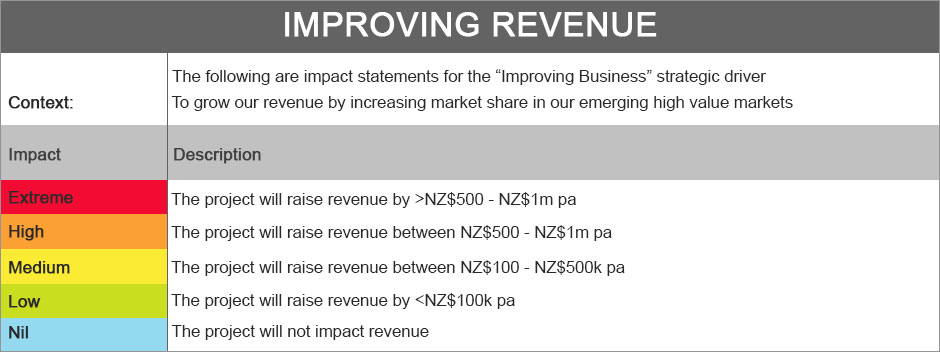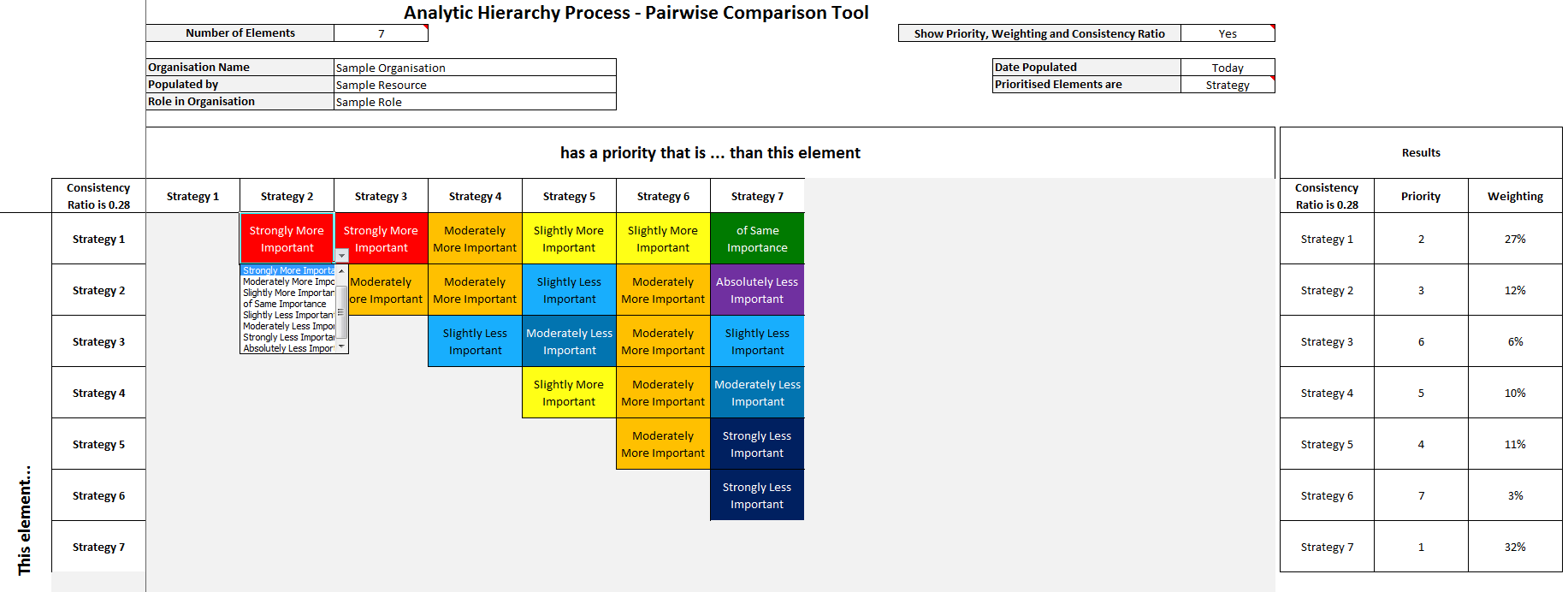How Do You Prioritize Projects?
It is one thing to be able to say that your projects are aligned to your strategy, but to what extent are they contributing, furthermore how do you prioritize projects? The primary prioritization of a portfolio of projects should be done by “Strategic Contribution”. There are other dimensions that must be considered before activating projects, like benefit, affordability, resource availability, risk, balance etc., however Strategic Contribution, being a balanced score is regarded as the primary prioritizing dimension. The extent to which any project is contributing to your strategy can be enumerated by the Analytical Hierarchy Process:
- Identifying your Strategic Drivers.
- Writing “impact statements” that define different levels of contribution to those Strategic Drivers and enumerate them.
- Evaluating the relative importance of your Strategic Drivers and enumerate them.
Click below to read more on Project Prioritization or contact Idea Partners.
Identifying Your Strategic Drivers
In the process of developing your strategy or as a separate activity of the Executive, you will identify the key drivers that frame the performance of your organisation. These drivers are the areas you are going to focus on to be successful. The number and types of drivers differ from one organisation to another, they may be financial and non-financial, tangible and intangible, hard and soft, whichever, they will be very important to your organisation. If they are important to your organisation you should be able to define them, observe changes in them and hence measure them. The table below shows examples of strategic drivers for three different organisations.
| Organisation “A” |
Organisation “B” |
Organisation “C” |
|
|
|
|
|
|
|
|
|
|
|
|
|
|
|
|
Some organisation may have only one driver, others tens of drivers, most have between 5-7. The danger with strategic drivers is that they can become “motherhood and apple pie”, meaningless one liners. It is critical that these drivers are contextualised, understood by the organisation’s staff and enumerated so they that success can be defined.
Impact Statements
The first step is to contextualise exactly what these drivers mean to your business; they may mean different things to different people, so document exactly what they mean. Secondly “impact statements” need to be written that define levels of contribution to these drivers (nil, low, moderate, high and extreme). The following is a very simple one dimensional example of impact statements for the Revenue strategic driver for Company X (note many impact statements are multi-dimensional):

The impact statements contextualise what the Revenue driver means to this business and what constitutes Extreme to Nil contribution.
Thirdly, each statement needs to be enumerated. The score each impact has depends on the nature of the impact statements, scores can be linear or non-linear, a single number or a range. This same process is repeated for each of the strategic drivers.
Idea Partners has the expertise to facilitate this process. Contact us for more information.
Relative Importance of the Strategic Drivers
Not all of the strategic drivers have the same importance and may in fact change as the internal and external environment changes. The next stage requires the Executive Management to agree how important each of the drivers is. Idea Partners recommend using a pairwise comparison method known as the Analytical Hierarchy Process (AHP). We use this algorithm to compare each driver individually with the other drivers. The algorithm weights and ranks the importance of the drivers ensuring consistency (i.e. if A > B and B > C, then A must be > C). It is important that this weighting remains confidential to the Executive team (to minimize “gaming”). The screen shot below demonstrates the AHP tool.

Each project is then measured against the weighted impact statement score for each Strategic Driver. The product of this calculation gives each project an overall Contribution to Strategy Score. Understanding the relative Contribution to Strategy Score is the first step in the Portfolio Management process. This method can be performed using both global (Enterprise level) and local (Business Unit level) drivers each weighted according to the organisation’s needs.
Subsequently you must evaluate factors such as: affordability, resource availability, risk, return and balance. Contact us for more information regarding Project Prioritization.
